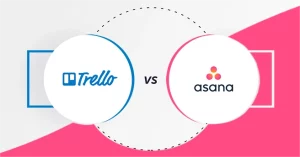
As the world moves more towards a digital, interconnected economy, small banks are feeling the squeeze. With big banks taking up more of the market share and offering competitive interest rates and products, many small banks have been left behind. Small banks are struggling to keep up with regulations and rising costs, making it difficult for them to stay afloat. In this blog post, we will explore the issues that small banks face in today’s financial landscape, how they can mitigate their risks by leveraging technology, and why they should consider providing more lending options. We’ll also look at potential solutions that can help small banks stay competitive in unpredictable times.
What is a small bank?
Though small banks are typically defined as those with assets below $10 billion, there is no definitive size that separates a small bank from a large one. In general, these banks are local or regional in scope, and have a more personal relationship with their customers than do large banks.
Unfortunately, this personal touch comes at a price. Small banks are generally less efficient than their larger counterparts, and as a result they tend to charge higher fees and offer lower interest rates on deposits. They also tend to be more risky, making more loans to borrowers with weak credit histories and relying heavily on volatile sources of funding like commercial real estate loans.
All of this makes small banks a particularly attractive target for regulators seeking to contain the risk of the banking system. In recent years, small banks have been subject to higher capital requirements and tougher lending standards than big banks. This has made it harder for them to compete, and has led many small banks to fail or be acquired by larger ones.
Why are small banks struggling?
Small banks are struggling for a variety of reasons. Firstly, their funding is riskier than that of large banks. They rely heavily on deposits and other short-term funding sources, which can dry up quickly if there is a run on the bank. Secondly, small banks have less diversified loan portfolios than large banks, so they are more exposed to losses if any particular sector of the economy slows down. Finally, small banks are often less efficient than large banks, so they have higher operating costs and thinner profit margins.
The problems with small banks
Small banks are having a tough time staying afloat. They’re struggling to compete with big banks and offer the same services, but without the economies of scale. They’re also facing more regulation and higher costs. And, their funding is becoming more expensive and riskier.
All of these factors are making it difficult for small banks to lend money to businesses and consumers. The result is that the economy isn’t getting the boost it needs from small banks. That’s bad news for everyone, because a strong economy depends on a healthy banking system.
The risks of investing in small banks
Small banks are often lauded as being a safer investment than their larger counterparts. However, this may not always be the case. Small banks are more likely to rely on riskier funding sources, such as short-term loans, and they also tend to lend more money to small businesses and individuals. This can make them more vulnerable to defaults and financial difficulties.
In addition, small banks typically have fewer resources and less experience than larger banks. This can make it difficult for them to weather economic downturns or other challenges. Investors in small banks should be aware of these risks before making any decisions.
Should you invest in small banks?
If you’re looking for a safe investment in these turbulent economic times, small banks may not be the best option. Small banks are facing big problems, including riskier funding and more lending.
The banking sector has been under pressure since the financial crisis of 2008. Large banks have been struggling to regain trust and confidence, while small banks have been feeling the squeeze from new regulations and higher costs.
Now, small banks are starting to feel the pinch from another source: competition from online lenders. Online lenders offer loans with lower interest rates and faster approval times than traditional banks. This is a major threat to small banks, who are already struggling to compete on price and speed.
So, should you invest in small banks? It depends on your appetite for risk. Small banks are facing big challenges, but they also offer the potential for high returns if things turn around.
Conclusion
Small banks play an important role in the banking system but their current situation has caused them to face some very big problems. Their size and lack of access to capital makes it difficult for them to compete with larger banks, as well as potentially putting them at risk if they are unable to manage their risks properly. It is essential that small banks find ways to increase lending and reduce costs so that they remain competitive in the banking industry. With a bit of creativity and innovation, there is no doubt that small banks can overcome these challenges and once again become successful lenders.

















